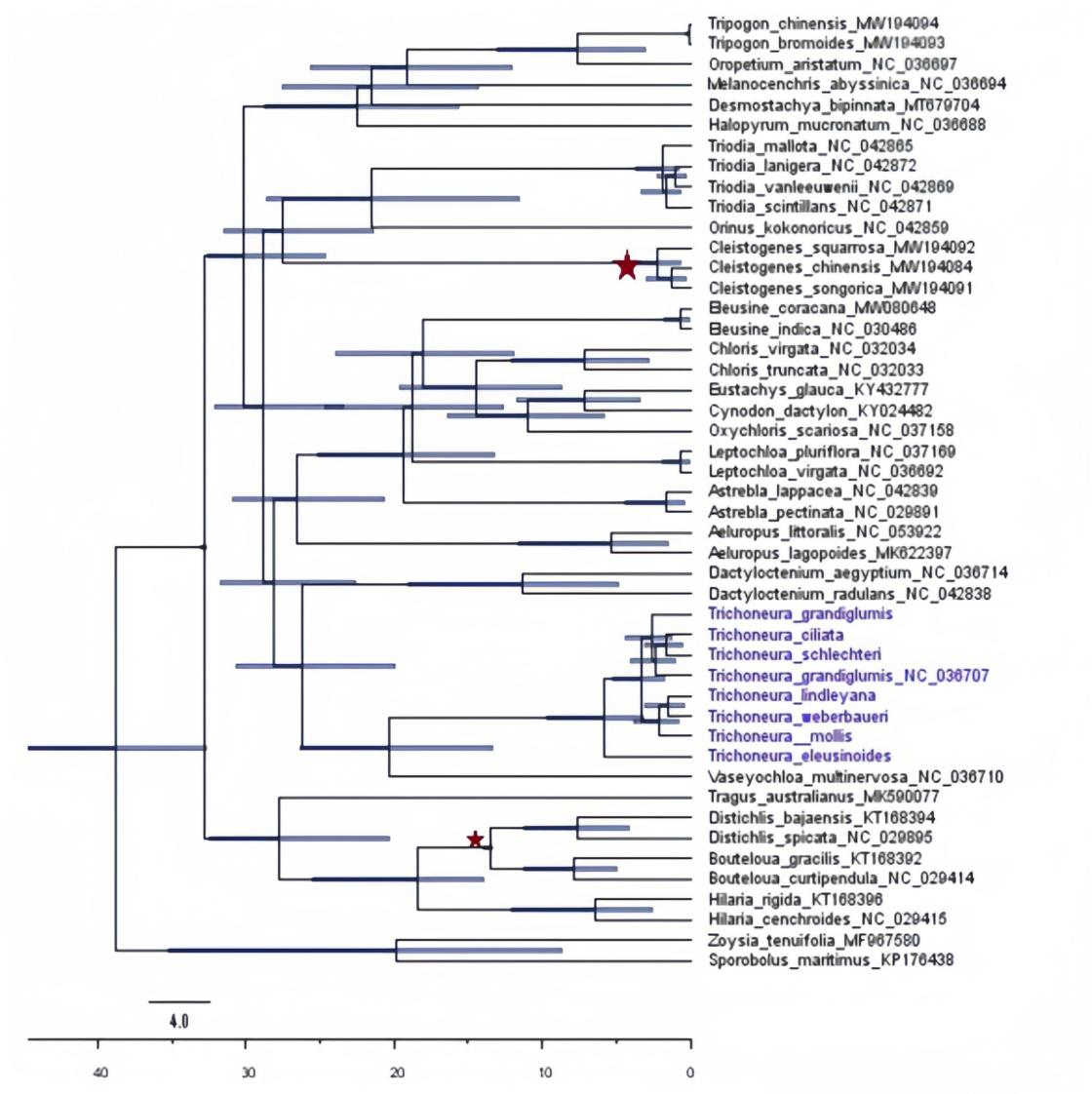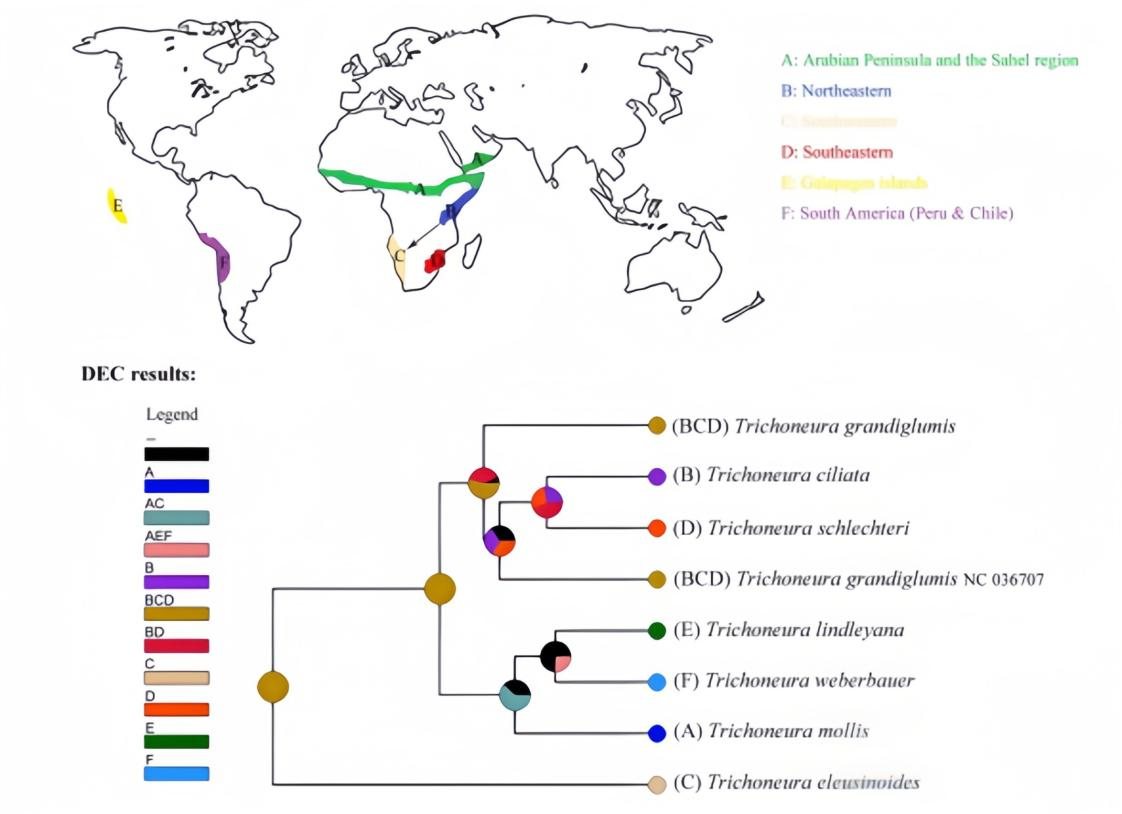Name:HU Guangwan
Tell:
Email:guangwanhu@wbgcas.cn
Organization:Wuhan Botanical Garden
African Arid Corridor: A Key Driver in the Evolution and Dispersal of Trichoneura
2025-05-14
The formation of the African arid corridor, a significant geological event in the Miocene epoch, profoundly impacted the evolution and distribution of the Trichoneura genus, according to a new study published in the Journal of Systematics and Evolution.
The African arid corridor is an arid region formed during the Miocene epoch, running through the central and southern parts of Africa and dividing the originally continuous forest ecosystem into multiple isolated habitats.
The research team, led by professor HU Guangwan from the Wuhan Botanical Garden, Chinese Academy of Sciences, and collaborators sequenced the complete chloroplast genomes and nuclear genes of seven Trichoneura species, and reconstructed the phylogenetic relationships and divergence history of Trichoneura.
The research found that the genus originated in the late Miocene epoch about 5.78 million years ago, coinciding with the formation of the African arid corridor (Figure 2). This geological event directly resulted in the fragmentation of Trichoneura plants (Figure 1), leading to the evolution of independent species adapted to different ecological niches.
“Our findings suggest that the African arid corridor acted as a major evolutionary force, driving the diversification of Trichoneura genus,” said Professor HU. “The timing of the genus's origin and the subsequent fragmentation of its distribution range are closely linked to the formation of this arid region.”
The study revealed that Trichoneura initially distributed in southwestern Africa, and then spread to northeastern Africa, South America, and the Arabian region through two dispersal events and one vicariance event. Notably, the genome analysis of T. mollis, a species widely distributed in Africa, showed high similarity to T. lindleyana in South America (Figure 3), suggesting the possibility of trans-Atlantic dispersal.
Furthermore, ecological niche modeling revealed the amazing adaptability of Trichoneura species to arid environments. The simulation results show that these plants prefer habitats such as semi-arid deserts, grass savannas, and tropical dry forests. Despite the fragmented distribution, their ecological niches on different continents exhibit highly overlap, demonstrating "phylogenetic niche conservatism". The model also predicts that the suitable distribution area of T. eleusinoides may expand along the arid corridor to northeastern Africa, providing a scientific basis for understanding species migration under future climate change.
These findings demonstrate the profound impact of the African arid corridor on the genus's evolution and offer a detailed reconstruction of its ancestral distribution areas.
Dr. Millicent Akinyi Oulo is the first author, and Prof. HU Guangwan is the corresponding author. It united researchers from China and the UK. The research was funded by several projects, including the Hubei Provincial Science and Technology Program, the National Natural Science Foundation of China, the Hubei Jiangxia Laboratory, and the Bentham‐Moxon Trust.

Figure 1. Schematic diagram of the distribution of Trichoneura in Africa (Image by WBG)

Figure 2. Estimation of divergence times of species in the tribe Cynodonteae based on 73 protein-coding genes (Trichoneura genus is shown in purple) (Image by WBG)

Figure 3. Ancestral area reconstruction of seven Trichoneura species (based on the DIVALIKE model in the RASP software) (Image by WBG)